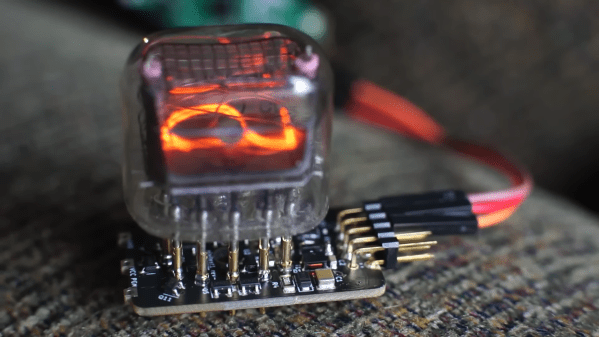Nixie tubes can add some retro flair to any project, but they can also complicate your electronics quite a bit: after all, you need to generate a voltage high enough to ignite the tube and then switch that between ten separate display segments. Traditionalists may want to stick with chunky mains transformers and those unobtainium 74141 segment drivers, but modern components allow you to make things much more compact, not to mention way cheaper. [CNLohr] took this to an extreme, and used clever design tricks and his sharp online shopping skills to make an exceptionally compact Nixie driver circuit that costs less than $2.50.
That price doesn’t include the tubes themselves, but [CNLohr] nevertheless bought the cheapest Nixies he could find: a pair of IN-12B tubes that set him back just $20. He decided to generate the necessary 180 volts through a forward converter built around a $0.30 transformer and a three-cent MOSFET, controlled by software running on a CH32V003. This is one of those ultra-cheap microcontrollers that manage to squeeze a 48 MHz RISC-V core plus a bunch of peripherals into a tiny QFN package costing just 12 cents.
The existing toolchain to program these micros left a lot to be desired, so [CNLohr] wrote his own, called
ch32v003fun. He used this to implement all the control loops for the forward converter as well as PWM control of the display segments – a feature that adds a beautifully smooth turn-on and turn-off effect to the Nixie tubes. There’s still plenty of CPU capacity left to implement other features, although [CNLohr] isn’t sure what to put there yet. Turning the tubes into a clock would be an obvious choice, but the basic system is flexible enough to implement almost anything requiring a numeric display.
The compactness of this circuit is impressive, especially if you compare it to earlier solutions. There’s plenty of fun to be had with cheap-yet-powerful micros like the ch32v003, provided you can find them.
Continue reading “Modern Components Enable Cheap And Compact Nixie Driver Circuit”












